Words and photographs copyright Scott Bourne
As a resident of the Seattle area, I’m fortunate enough to find myself surrounded by natural beauty. I can jump in the car and in less than three hours find myself at the gates of many deserving spots, but one of my favorites is Mt. Rainier National Park. Mt. Rainier is the tallest mountain in the Lower 48 and also happens to be one of the most active volcanoes anywhere in the hemisphere. That volcano is responsible for lots of cool things such as glaciers, rivers, creeks, waterfalls, and more. It also occasionally carves out new landscapes worthy of exploration. While I’m primarily a bird photographer and most of my trips to the mountain are spent in search of hawks, jays, songbirds, and the occasional swan, I’m always happy to try to make a nice landscape photo while I’m there.
When the “mountain is out,” as we locals like to say of a sunny day, I’ll sometimes head over to see what new majesty awaits my camera lens. Season-to-season it varies. Sometimes the mountain flowers come in early; sometimes the spring waterfalls run especially heavy and late. There are birds and animals of different varieties year-round. But no matter what time of year, or what’s happening with the next potential belch of the mountain, there are two places I visit each and every time I go. They are very popular and many might think of them as photographers’ clichés. Cliché is another way of saying something is ordinary. Most of the time the people who say photographing the Reflection Lakes area is “ordinary” are people who’ve never actually been to the mountain. Chances are they’ve never had the awe-inspiring experience of listening to the sounds of the water flow over the creeks as elk bugle in the distance. Most have never stood on the banks of Reflection Lakes or its nearby cousin Tipsoo Lake and seen the incredible grace (and power) of the landscape in their own lens. Because if they had, they wouldn’t think there’s anything remotely ordinary about it. These subalpine and alpine lakes feature meadows teaming with flora and fauna and it’s easy to spend the day hiking the area to uncover additional treasures.
In the summer, when the snow has melted off in the lower elevations, the sky is azure blue, the gray jays are singing, the woodpeckers are drilling holes for their nests, and the Indian Paintbrush and Lupine are blooming, I like to make my way to each of these natural wonders with the goal of helping to tell their stories to countless millions who will never be as lucky as I am to see them firsthand.
Reflection Lakes
Last August, I went to the park to spend the night in the Paradise Inn. The old National Park lodges are a sight to behold and they’re renovating (some say modernizing) most of them. Paradise is on that list and I spent the night on the last weekend she was open before the new construction began. When it fully reopens, it will be a new place. Like the lodge, I’m old and sometimes prefer things the way they used to be. I’m sure the new lodge will be very nice, but this 100-year old gem is special, and I wanted to be able to remember the lodge as it was originally designed by Frederick Heath.
One of the reasons I like to stay at the lodges is they’re located inside the National Park boundaries. That saves time driving to and from the best photo attractions early in the morning or late at night. From Paradise Inn, it’s very easy to get to the sunrise locations at Reflection Lakes in plenty of time to make informed choices about where and what to shoot. On the day I made the image below, I was there early enough to capture morning mist forming on the lakes and I even found a small stand of wildflowers hanging on to the last blooms of the season. Most of the flowers had come and gone, since the summers are very short at these altitudes. I felt fortunate. I like finding flowers to fill the foregrounds of my landscape shots.
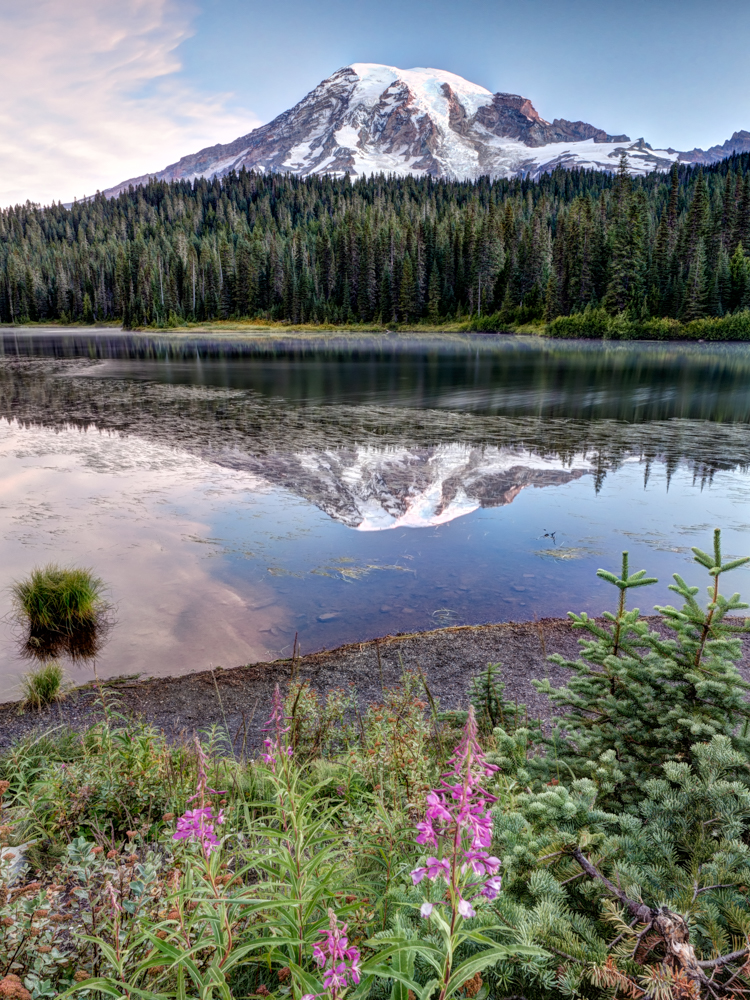
There’s ample parking at Reflection Lakes turnoff and it’s less than 50 yards down to the water. The hike isn’t too steep. If I can do it, pretty much anyone can. Some photographers will line up at the parking lot and go for the easy shot. It’s pretty up there, and there’s nothing wrong with it, but I prefer to get down low near the water at Reflection Lakes. It makes Mt. Rainier’s reflection seem that much more impressive, at least in this case.
You can make all sorts of images here. Wide-angle shots work best if you want to show the entire scene and its context, but you could just as easily work with a telephoto lens and focus on specific parts of the mountain’s story. The area lends itself to sunrise shots but you can also stay an extra 45 minutes and make great black-and-white images. On this day I did both. In order to capture all the dynamic range in the scene, I shot five bracketed images in case an HDR was necessary. The picture here was merely one image postprocessed in a combination of Adobe Lightroom, Photoshop, and Macphun Luminar.
As long as you expose to the right (but avoid clipping) you can usually pull more information of the rest of the image, and I was able to do so here. The HDR stuff ended up just being my backup.
After sunrise, I waited a while for just a little more light and decided to shoot the mountain without the flowers—going for a black-and-white image, which I also converted in Luminar. It has an entirely different feeling but I like it nearly just as much as the sunrise shot.
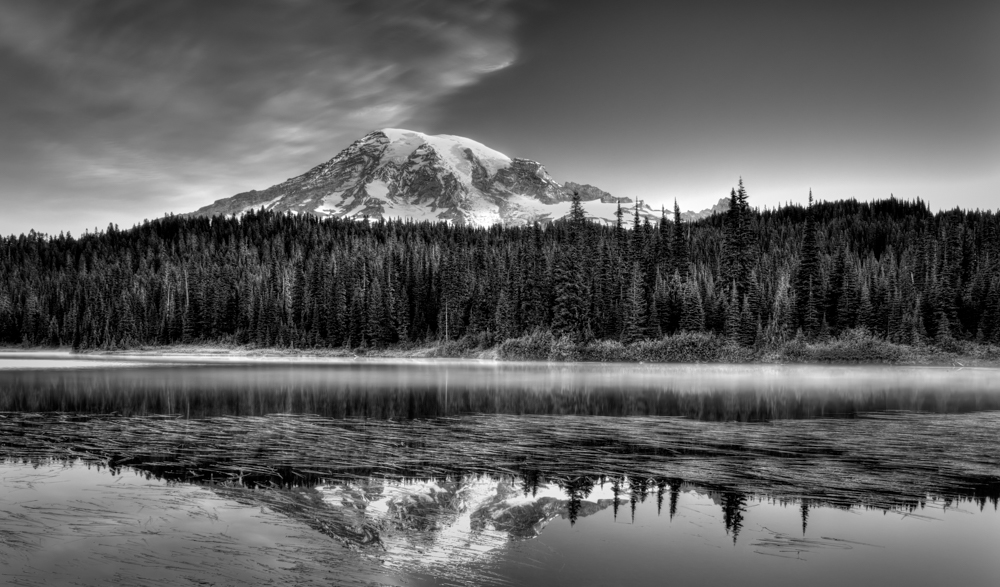
Tipsoo Lake
My next favorite location at Mt. Rainier National Park is the Tipsoo Lake area. It’s spectacular for all the same reasons as Reflection Lakes. It’s a little less known and therefore you probably haven’t seen as many images from this location as Reflection Lakes. While Reflection Lakes is a favorite sunrise spot, Tipsoo Lake is a favorite for sunset. There are more options here than at Reflection Lakes since you can park in more places and each of the parking areas offer different angles (and interpretations) on the scene. As you point your camera at the mountain reflection in Tipsoo Lake, don’t forget to turn around and admire the smaller hillside behind you. Sometimes that lights up and can be just as pretty (and interesting if there are lenticular clouds), and it’s fun to photograph. You might also see wild sheep up on the craggy rocks, but this isn’t the best place to photograph them because they will be too far away and in shadow. It’s still nice to know they’re there.
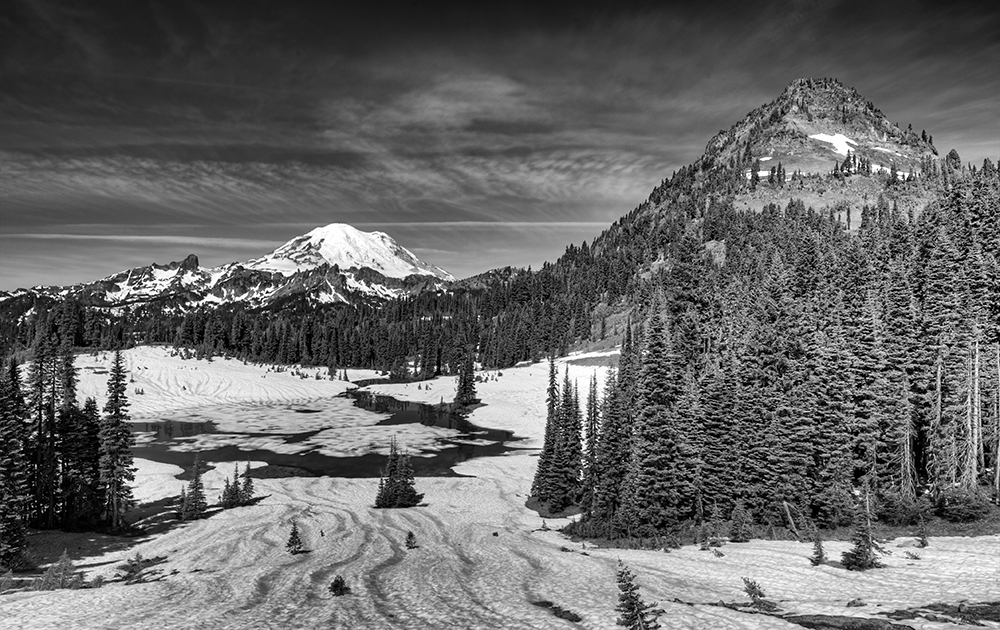
Unlike Reflection Lakes, I actually like shooting at Tipsoo from the road. The shot below illustrates the view you get from near the parking area. Sometimes I hike across the road to a grassy knoll that offers just a little bit more elevation. It gives you a broader perspective, although it usually means it’s going to be hard to get flowers in the foreground.
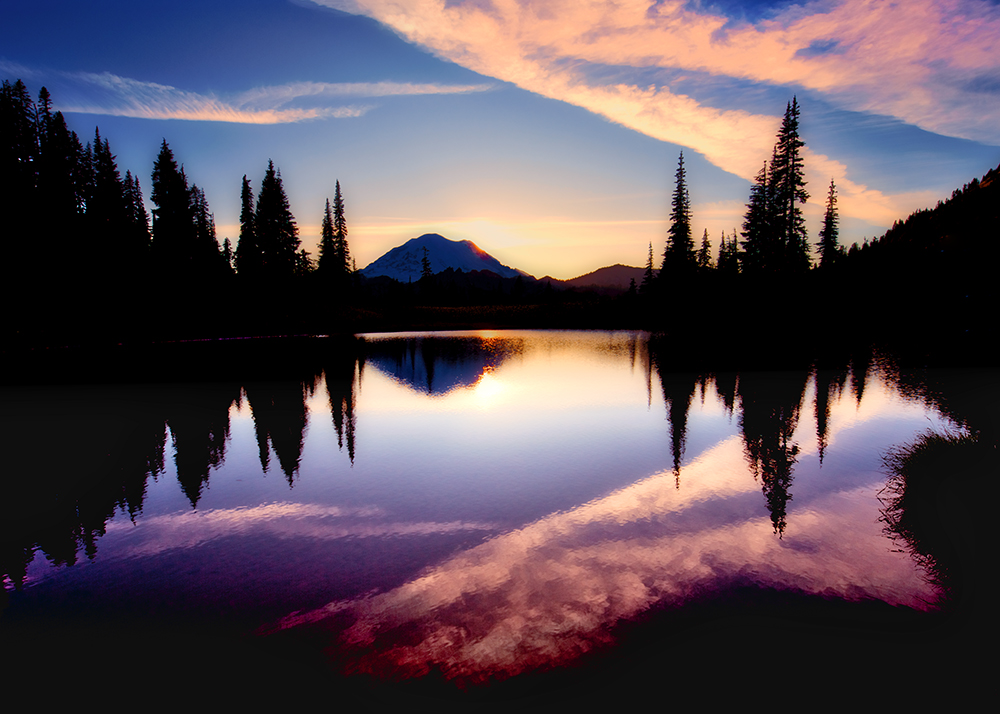
Conclusion
No matter where you go inside Mt. Rainier National Park, you’ll be thrilled with the scenery. There are many small waterfalls and pull-outs full of wildlife, flowers, and amazing vistas that you simply have to see to believe. Whether you have a day or a week to spend at Mt. Rainier, make sure that you stop at both Reflection and Tipsoo Lakes. Even if you keep your camera in the bag and just make what I like to call “memory chromes,” you’ll be better for having spent some time where the air smells particularly clean, where the noise of the digital world fails to interrupt, and where around every corner is the possibility of a new photographic subject that will make you say “wow!”
Where to Go:
Mt. Rainier National Park is located at 46°51′N 121°45′W.
The Reflection Lakes area is located three miles east of Paradise on Stevens Canyon Road.
Tipsoo Lake is located near the summit of Chinook Pass in Pierce County, Washington. Tipsoo Lake parking area is located a half-mile west of Chinook Pass. The elevation at both lakes is approximately 5,300 feet.
When to Go:
Parts of Mt. Rainier National Park are accessible year-round, weather dependent. Summer offers the best experience if you want to have the most access and a chance at a good combination of wildlife and wildflowers.
Where to Stay:
If you want to photograph the areas I talked about here, Packwood, Washington will be your best option unless you want to camp in the park. The Inn is still open (seasonally) during renovations but it might not be your best choice during construction. The Cowlitz River Lodge (13069 U.S. Hwy 12, Packwood, WA 98361 | Reservation Line: 1-888-305-2185) has always most reliable in terms of quality/price ratio and it has the benefit of a large grassy front yard that attracts a herd of Roosevelt elk every summer.
Stuff to Bring:
If you’re photographing around sunrise or sunset, I highly recommend a tripod since you’re going to have longer exposures. If you don’t want to shoot for HDR, then I suggest graduated ND filters since there will always be the possibility of very bright values in the snowcapped peaks that never leave the mountaintop.
At least one camera body with interchangeable lenses. I suggest wide-angle (anywhere from 20–35mm) and a medium telephoto zoom such as a 70–200mm.
Wear sturdy shoes if you plan to go beyond the paved areas. A sun hat is a good idea. In fact, just bring lots of varied types of clothing. Weather on the mountain can vary wildly and widely. Dress in layers. It may be cold enough for a winter hat and gloves in August at sunrise and end up being shorts and short-sleeve weather at sunset. I also suggest lots of bug spray since both lakes can attract pests if it’s warm outside.
Bring extra water since you’ll probably be spending time at elevations which are higher than you’re used to and it’s easy to get dehydrated.
Park Information:
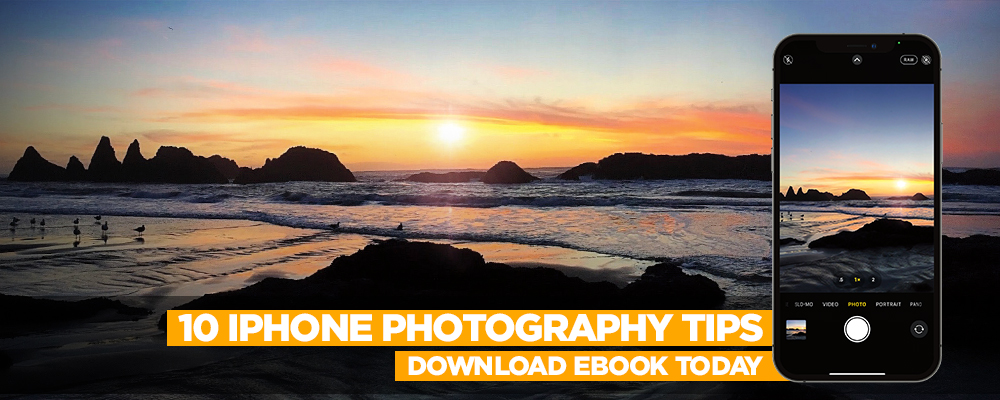




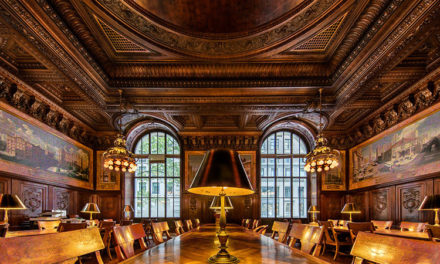

I have photographed in both of those areas. I have some beautiful images and hope to return someday.
I thought that Mount Whitney, in California, was the tallest peak in the lower 48 states. According to Wikipedia, Mount Ranier is number five.
Great article. Thanks for sharing the info.
Sorry to nitpick, but Mount Rainier isn’t the highest peak in the lower 48, it’s actually the 3rd highest following Mount Whitney in CA, which is the highest; and Mount Elbert in CO which is the second highest.